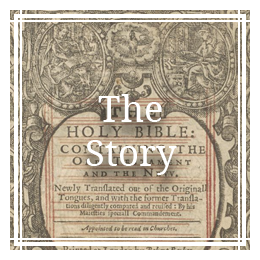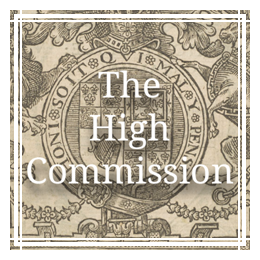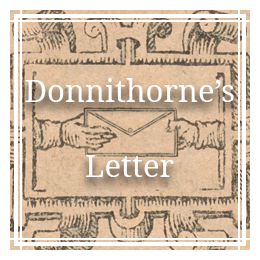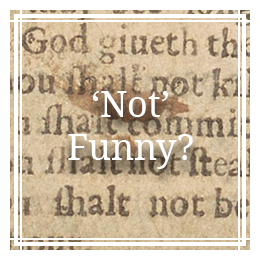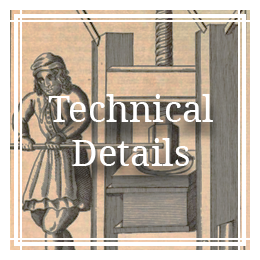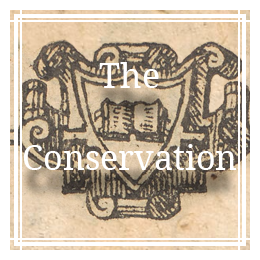About the Bible
Quick links
The Bible’s history and context:
The physical object and its production:
The Wicked Bible: the story
by Chris Jones
What is a Wicked Bible? And how did one come to be in Christchurch, New Zealand? In this short introduction, Chris Jones explores the origins of the most famous misprint in the English language and considers how the Donnithorne-Christchurch copy came to be on the South Island of Aotearoa New Zealand.
The Court of High Commission
by Annika Stedman
This essay offers an introduction to the unique court in which the King’s Printers were tried after their scandalous printing error in Exodus 20. Robert Barker and Martin Lucas were prosecuted before the court of High Commission, an official, independent body with a flexible jurisdiction that could impose fines, imprisonment and other penalties. Unlike the regular English courts, this court was free to operate on an individual, solution-oriented basis, an approach which in the case of Barker and Lucas worked in their favour.
A Letter from the Owner
by Louise Donnithorne
A letter from the Donnithorne family, owners of this taonga.
Louise Donnithorne briefly speaks on what this bible and the Wicked Bible Project mean to her, and how the book has brought about a once-in-a-lifetime opportunity to contribute to a larger world of scholarship.
‘Not’ Funny? - Humour, Embarrassment and the ‘Wicked Bible’
by David Moseley
This UC MA dissertation explores several historical misconceptions which give the impression that the 17th-century reaction to the Wicked Bible was religious outrage. It re-examines the book’s reception by exploring the emotional reactions of people at the time. Adultery was a common topic of humour in the early modern period. Through analysis of popular comedic entertainment, and engagement with scholarship on the roots and causes of humour in the period, David Moseley argues that the Wicked Bible would have been found funny then, just as it is today.
Printing the Wicked Bible
by Quillan Taylor
This report examines the printing process that led to the creation of the Wicked Bible. Quillan Taylor explores each stage involved in the production of the bible, from the typeface to the use of engravings imported from Holland. The report pays particular attention to the Donnithorne-Christchurch bible’s use of red-lining, and what this can tell us about the social and economic circumstances in which this particular copy was produced.
Conserving the Donnithorne Wicked Bible
by Quillan Taylor
An introduction to the conservation work undertaken on the Donnithorne-Christchurch copy by Sarah Askey.
Based on Askey’s detailed report, Quillan Taylor provides an overview of the work undertaken on this copy prior to its digitisation. This explores some of the unique challenges presented by the Donnithorne-Christchurch volume.

